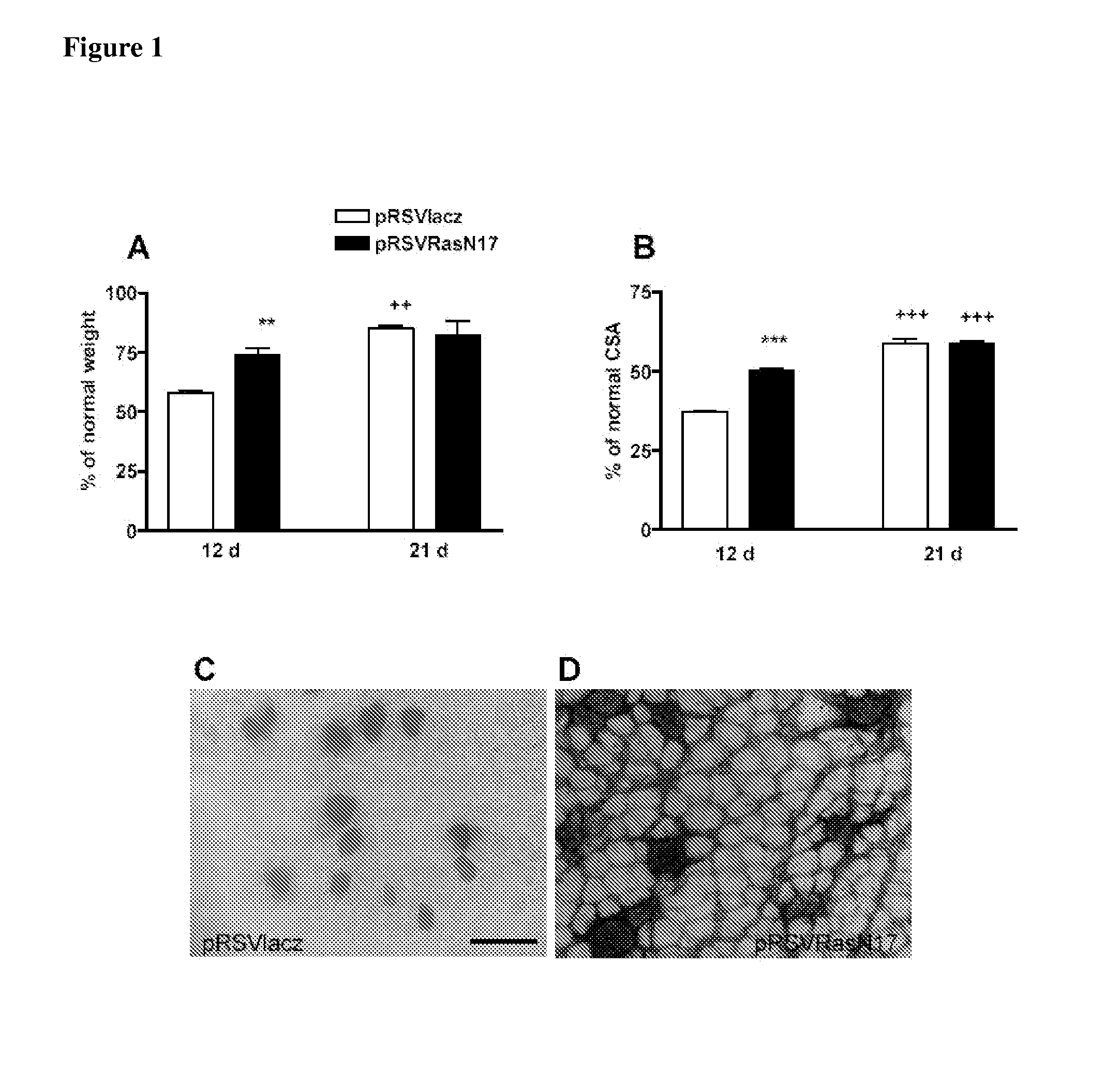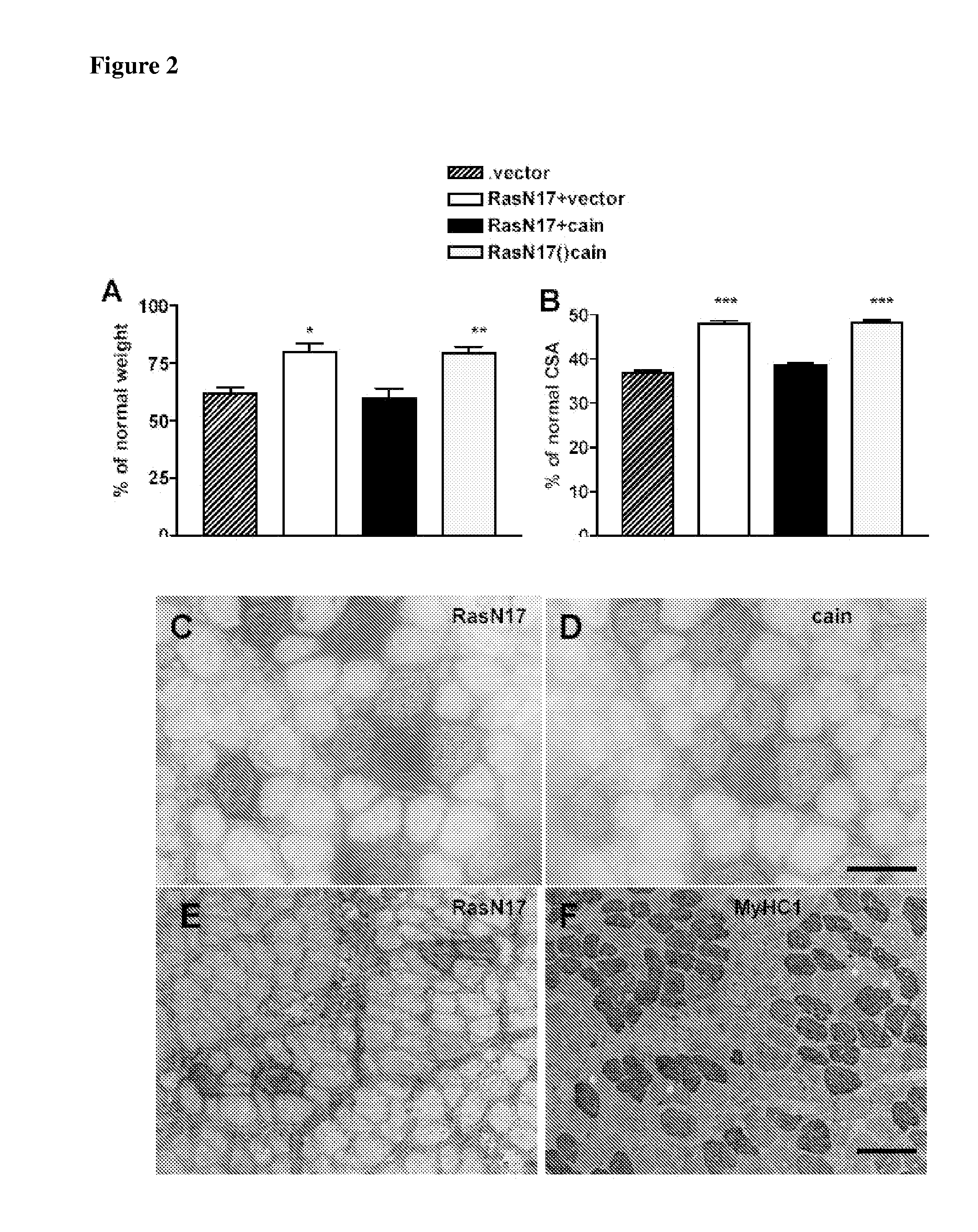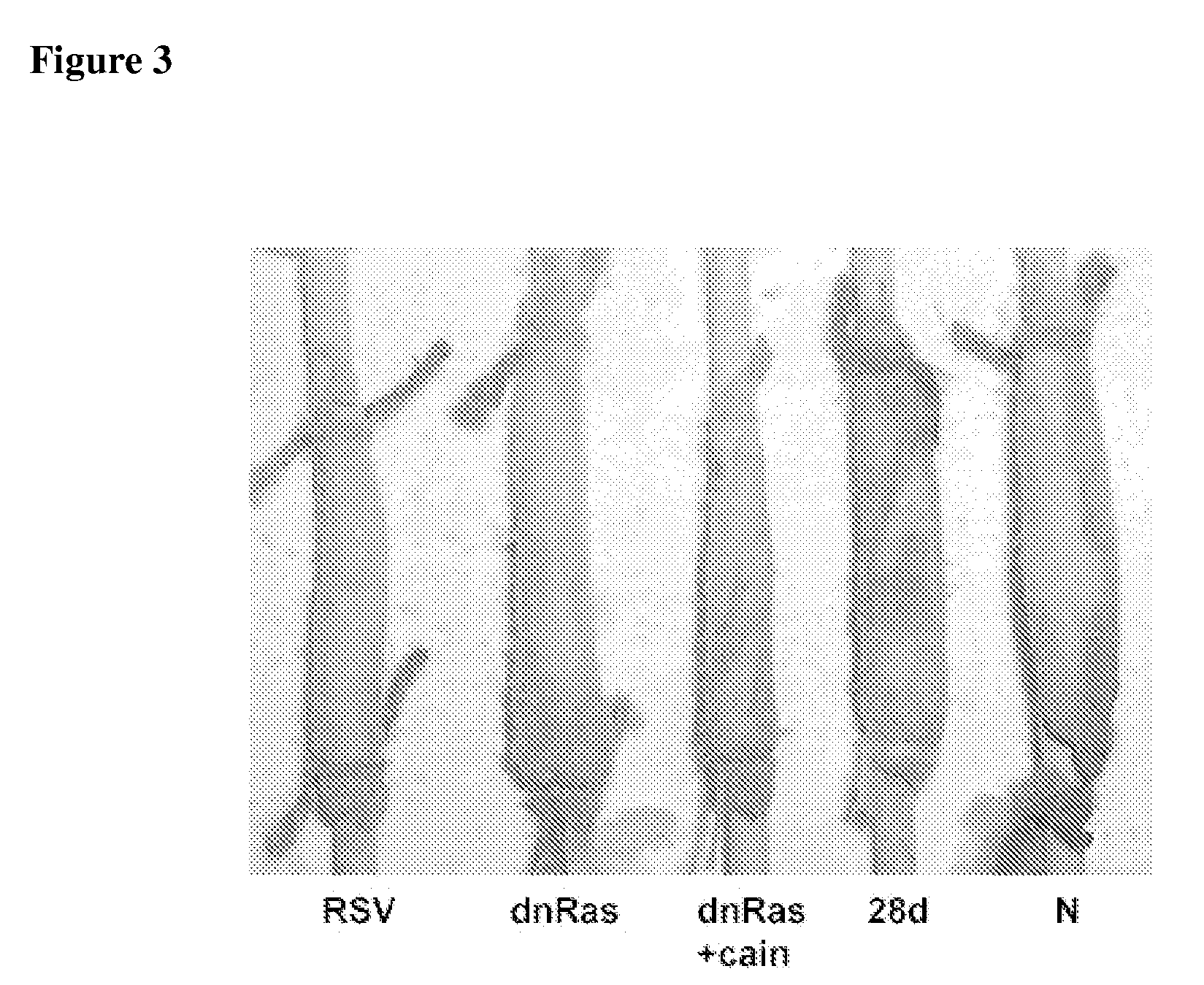Methods and substances for stimulating muscle regeneration
a technology of muscle regeneration and substances, applied in the field of muscle growth and regeneration, can solve the problems of little information available about the in vivo connection of calcineurin and ras in skeletal muscle, and achieve the effects of preventing growth stimulation, increasing mass and fiber size, and abolishing growth ameliorating
- Summary
- Abstract
- Description
- Claims
- Application Information
AI Technical Summary
Benefits of technology
Problems solved by technology
Method used
Image
Examples
example 1
In Vivo Transfection of about 1% of the Fibers with Plasmid Expressing dnRas Stimulates the Fresh Weight and Fiber Size Regenerating Soleus Muscle in Rats
[0061]The regenerating soleus muscle gradually increased mass and fiber size to 98% and 83% of those of the normal soleus within 28 days following the notexin-induced necrosis (Table 1). The even progress of regeneration made feasible the detection of stimulation of fiber growth. In vivo transfection of about 1% of the fibers (i.e. 24 out of 2400 of total fibers [16]) with plasmid expressing dnRas stimulated the fresh weight and fiber size compared to the control regenerating muscles transfected with the pRSV lacz vector at 12 days of regeneration in the soleus (FIG. 1AB). The dnRas transfected fibers were identified by the pan Ras antibody and the pRSV lacz transfected fibers by the expression of beta-galactosidase (FIG. 1CD). The dnRas expressing fibers did not show any difference in size compared to the untransfected fibers in t...
example 2
Inhibition of Calcineurin Activity Prevents the Growth Stimulation by dnRas
[0062]The calcineurin-NFAT-IL-4 is an important pathway in autocrine / paracrine fiber growth [8]. In order to check the connection between Ras and calcineurin, the regenerating soleus muscles were transfected with the mix of the dnRas expressing plasmid and a plasmid expressing the calcineurin inhibitor cain / cabin [19]. The transfection with such a plasmid mix practically results in only co-transfected fibers [5,21]. No difference was found in respect of fresh weight, muscle length and fiber size between the co-transfected muscles and the controls at day 12 of regeneration (FIG. 2AB) showing that the inhibition of calcineurin prevented the growth stimulation by dnRas. However, when the empty plasmid of cain was co-transfected with dnRas into the regenerating soleus muscles, the fresh weight and fiber size was increased similar to the muscles transfected only with dnRas (FIG. 2AB). This shows that the calcineur...
example 3
Subcutaneous Injection of an IL-4 Specific Antibody Prevents Regenerating Fiber Growth
[0064]It has been reported that calcineurin-NFAT upregulates the expression of the interleukin-4 gene in developing muscle fibers [8]. The immunoblot did not show a difference in the IL-4 level of dnRas transfected regenerating so-lens muscles compared to the controls (FIG. 4A). However, the immunostaining for interleukin-4 showed a small increase of labeling around 15% of the dnRas expressing fibers compared to the utransfected fibers (FIG. 4BC). In contrast, in the pRSV lacz transfected control muscles the cytokine was not more detectable around the lacz expressing fibers than at the periphery of the untransfected ones (FIG. 4 DE). In order to test whether the increase of interleukin-4 is functionally involved in the calcineurin dependent growth stimulation by dnRas, a specific antibody for IL-4 was injected subcutaneously to the leg of the dnRas transfected regenerating soleus. This treatment pr...
PUM
| Property | Measurement | Unit |
|---|---|---|
| Fraction | aaaaa | aaaaa |
| Fraction | aaaaa | aaaaa |
| Fraction | aaaaa | aaaaa |
Abstract
Description
Claims
Application Information
 Login to View More
Login to View More - R&D
- Intellectual Property
- Life Sciences
- Materials
- Tech Scout
- Unparalleled Data Quality
- Higher Quality Content
- 60% Fewer Hallucinations
Browse by: Latest US Patents, China's latest patents, Technical Efficacy Thesaurus, Application Domain, Technology Topic, Popular Technical Reports.
© 2025 PatSnap. All rights reserved.Legal|Privacy policy|Modern Slavery Act Transparency Statement|Sitemap|About US| Contact US: help@patsnap.com



